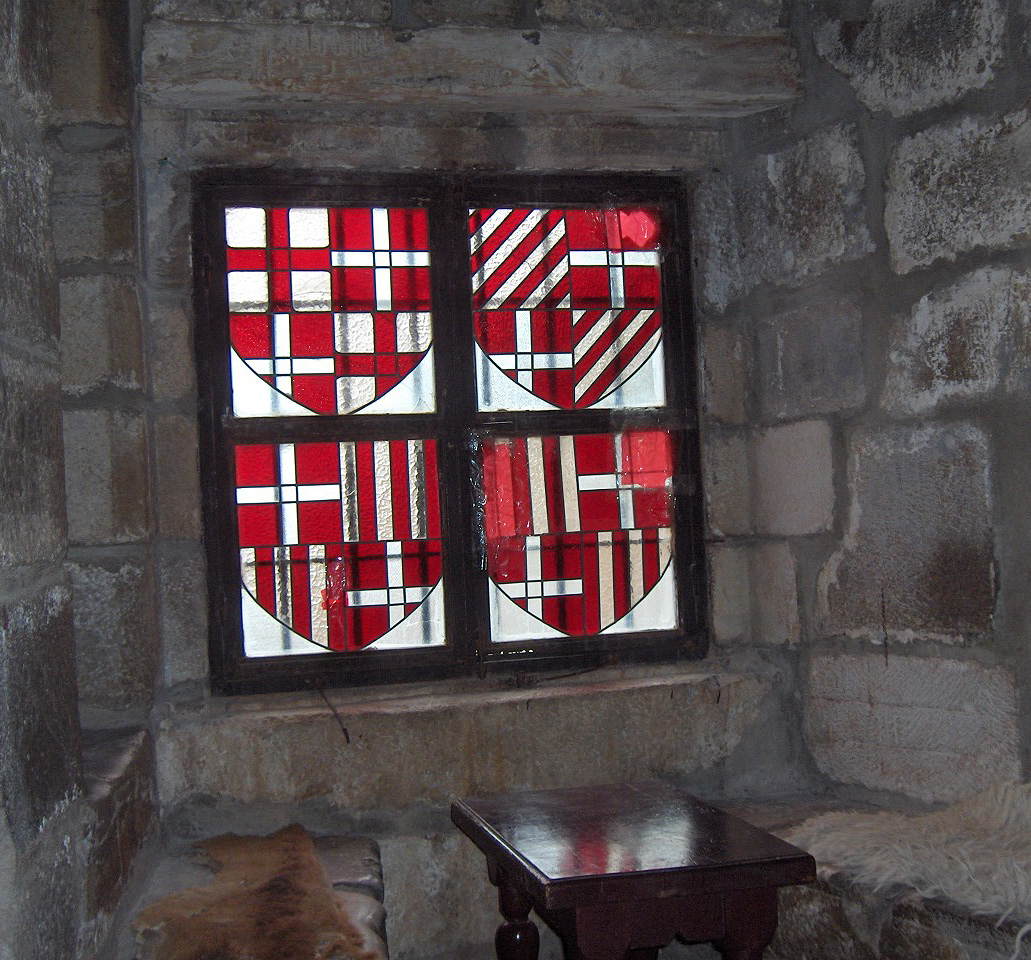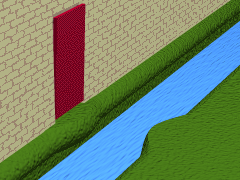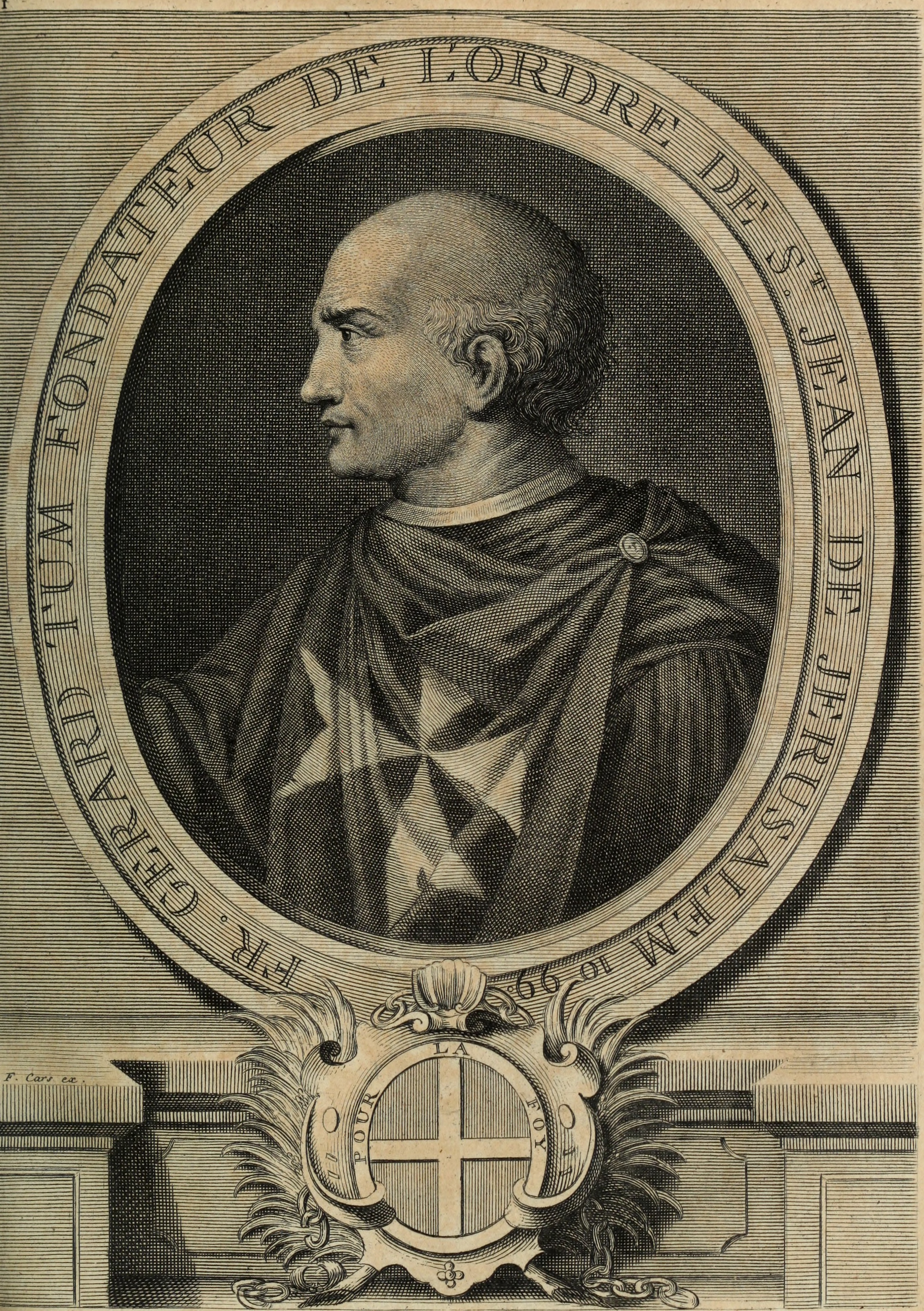|
Castle Of St. Peter
Bodrum Castle () is a historical fortification located in southwest Turkey in the port city of Bodrum, built from 1402 onwards, by the Knights of St John (Knights Hospitaller) as the ''Castle of St. Peter'' or ''Petronium''. A transnational effort, it has four towers known as the English, French, German, and Italian towers, bearing the names of the nations responsible for their construction. The chapel was built around 1407 and the first walls completed in 1437. The castle started reconstruction in the late 15th century, only to be taken over by the Islamic Ottoman Empire in 1523. The chapel was converted to a mosque, and a minaret was added. The castle remained under the empire for almost 400 years. After remaining empty following World War I, in the early 1960s, the castle became the home for the Bodrum Museum of Underwater Archaeology. In 2016 it was inscribed in the UNESCO Tentative list of World Heritage Sites in Turkey. History Confronted by the now firmly established Ott ... [...More Info...] [...Related Items...] OR: [Wikipedia] [Google] [Baidu] |
Muğla Province
Muğla Province (, ) is a Provinces of Turkey, province and Metropolitan municipalities in Turkey, metropolitan municipality of Turkey, at the country's southwestern corner, on the Aegean Sea. Its area is 12,654 km2, and its population is 1,048,185 (2022). Its seat is the city of Muğla, about inland, while some of Turkey's largest holiday resorts, such as Bodrum, Ölüdeniz, Marmaris and Fethiye, lie on the coast. Geography At , Muğla's coastline is the longest among the Provinces of Turkey and is home to the Datça Peninsula. As well as the sea, Muğla has two large lakes, Lake Bafa in the district of Milas and Lake Köyceğiz. The landscape consists of pot-shaped small plains surrounded by mountains, formed by depressions in the Neogene. These include the plain of the city of Muğla itself, Yeşilyurt, Muğla, Yeşilyurt, Ula, Muğla, Ula, Gülağzı, Menteşe, Gülağzı, Yerkesik, Menteşe, Yerkesik, Akkaya, Muğla, Akkaya, and Yenice, Muğla, Yenice. Until the recen ... [...More Info...] [...Related Items...] OR: [Wikipedia] [Google] [Baidu] |
Mehmed II
Mehmed II (; , ; 30 March 14323 May 1481), commonly known as Mehmed the Conqueror (; ), was twice the sultan of the Ottoman Empire from August 1444 to September 1446 and then later from February 1451 to May 1481. In Mehmed II's first reign, he defeated the crusade led by John Hunyadi after the Hungarian incursions into his country broke the conditions of the truce per the Peace of Szeged, Treaties of Edirne and Szeged. When Mehmed II ascended the throne again in 1451, he strengthened the Ottoman Navy and made preparations to attack Constantinople. At the age of 21, he Fall of Constantinople, conquered Constantinople and brought an end to the Byzantine Empire. After the conquest, Mehmed claimed the title Caesar (title), caesar of Roman Empire, Rome (), based on the fact that Constantinople had been the seat and capital of the surviving Byzantine Empire, Eastern Roman Empire since its consecration in 330 AD by Constantine the Great, Emperor Constantine I. The claim was soon reco ... [...More Info...] [...Related Items...] OR: [Wikipedia] [Google] [Baidu] |
Henry IV Of England
Henry IV ( – 20 March 1413), also known as Henry Bolingbroke, was King of England from 1399 to 1413. Henry was the son of John of Gaunt, Duke of Lancaster (a son of King Edward III), and Blanche of Lancaster. Henry was involved in the 1388 revolt of Lords Appellant against Richard II, his first cousin, but he was not punished. However, he was exiled from court in 1398. After Henry's father died in 1399, Richard blocked Henry's inheritance of his father's lands. That year, Henry rallied a group of supporters, overthrew and imprisoned Richard II, and usurped the throne; these actions later contributed to dynastic disputes in the Wars of the Roses (1455–1487). Henry was the first English ruler whose mother tongue was English (rather than French) since the Norman Conquest, over 300 years earlier. As king, he faced a number of rebellions, most seriously those of Owain Glyndŵr, the last Welshman to claim the title of Prince of Wales, and the English knight Henry Percy (Hotspur) ... [...More Info...] [...Related Items...] OR: [Wikipedia] [Google] [Baidu] |
Drawbridge
A drawbridge or draw-bridge is a type of moveable bridge typically at the entrance to a castle or tower surrounded by a moat. In some forms of English, including American English, the word ''drawbridge'' commonly refers to all types of moveable bridges, such as bascule bridges, vertical-lift bridges and swing bridges, but this article concerns the narrower historical definition where the bridge is used in a defensive structure. As used in castles or defensive structures, drawbridges provide access across defensive structures when lowered, but can quickly be raised from within to deny entry to an enemy force. Castle drawbridges Middle Ages, Medieval castles were usually defended by a ditch or moat, crossed by a wooden bridge. In early castles, the bridge might be designed to be destroyed or removed in the event of an attack, but drawbridges became very common. A typical arrangement would have the drawbridge immediately outside a gatehouse, consisting of a wooden Deck (bridge), ... [...More Info...] [...Related Items...] OR: [Wikipedia] [Google] [Baidu] |
Defensive Wall
A defensive wall is a fortification usually used to protect a city, town or other settlement from potential aggressors. The walls can range from simple palisades or earthworks to extensive military fortifications such as curtain walls with towers, bastions and gates for access to the city. From ancient to modern times, they were used to enclose settlements. Generally, these are referred to as city walls or town walls, although there were also walls, such as the Great Wall of China, Walls of Benin, Hadrian's Wall, Anastasian Wall, and the Atlantic Wall, which extended far beyond the borders of a city and were used to enclose regions or mark territorial boundaries. In mountainous terrain, defensive walls such as '' letzis'' were used in combination with castles to seal valleys from potential attack. Beyond their defensive utility, many walls also had important symbolic functions representing the status and independence of the communities they embraced. Existing ancient walls ... [...More Info...] [...Related Items...] OR: [Wikipedia] [Google] [Baidu] |
Early Thermal Weapons
Early thermal weapons, which used heat or burning action to destroy or damage enemy personnel, fortifications or territories, were employed in warfare during the ancient and post-classical periods (approximately the 8th century BC until the mid-16th century AD). Incendiary devices were frequently used as projectiles during warfare, particularly during sieges and naval battles: some substances were boiled or heated to inflict damage by scalding or burning; other substances relied on their chemical properties to inflict burns or damage. These weapons or devices could be used by individuals, thrown by siege engines, or utilised as army strategy. Incendiary mixtures, such as the petroleum-based Greek fire, could be launched by throwing machines or administered through a siphon. Sulfur- and oil-soaked materials were sometimes ignited and thrown at the enemy, or attached to spears, arrows and bolts and fired by hand or machine. The simplest and most common thermal projectiles we ... [...More Info...] [...Related Items...] OR: [Wikipedia] [Google] [Baidu] |
Bailiff
A bailiff is a manager, overseer or custodian – a legal officer to whom some degree of authority or jurisdiction is given. There are different kinds, and their offices and scope of duties vary. Another official sometimes referred to as a ''bailiff'' was the '' Vogt''. In the Holy Roman Empire a similar function was performed by the '' Amtmann''. They are mostly known for being the officer that keeps the order in a court of law and who also administers oaths to people who participate in court proceedings. Britain and Ireland Historic bailiffs ''Bailiff'' was the term used by the Normans for what the Saxons had called a '' reeve'': the officer responsible for executing the decisions of a court. The duty of the bailiff would thus include serving summonses and orders, and executing all warrants issued out of the corresponding court. The district within which the bailiff operated was called his '' bailiwick'', and is even to the present day. Bailiffs were outsiders and free me ... [...More Info...] [...Related Items...] OR: [Wikipedia] [Google] [Baidu] |
Tongue (Knights Hospitaller)
A langue or tongue () was an administrative division of the Knights Hospitaller (also known as the Order of St. John of Jerusalem) between 1319 and 1798. The term referred to a rough ethno-linguistic division of the geographical distribution of the Order's members and possessions. Each langue was subdivided into Priories or Grand Priories, Bailiwicks and Commanderies. Each langue had an ''auberge'' as its headquarters, some of which still survive in Rhodes, Birgu and Valletta. History The Knights Hospitaller began to take the features of a state following its acquisition of Rhodes and nearby islands in the early 14th century. The subdivision of the Order into ''langues'' began in 1319 during a meeting of the Chapter General in Montpellier. For the purposes of administration of the Order's possessions in Europe, the langues were divided into ''grand priories'', some of which were further divided into ''priories'' or ''bailiwicks'', and at the lowest level into '' commandrie ... [...More Info...] [...Related Items...] OR: [Wikipedia] [Google] [Baidu] |
Knights Of Malta
The Sovereign Military Order of Malta (SMOM), officially the Sovereign Military Hospitaller Order of Saint John of Jerusalem, of Rhodes and of Malta, and commonly known as the Order of Malta or the Knights of Malta, is a Catholic Church, Catholic Catholic laity, lay Religious order (Catholic), religious order, traditionally of a military order (religious society), military, chivalry, chivalric, and nobility, noble nature. Though it possesses no territory, the order is often considered a Sovereign state, sovereign entity under international law. The Order traces its institutional continuity with the Knights Hospitaller, a order of chivalry, chivalric order that was founded about 1099 by the Blessed Gerard in the Kingdom of Jerusalem. The order is led by an elected List of Princes and Grand Masters of the Sovereign Military Order of Malta, prince and grand master. Its motto is ("Defence of the faith and assistance to the poor"). The government of the Sovereign Order of Malta has ... [...More Info...] [...Related Items...] OR: [Wikipedia] [Google] [Baidu] |
Spain
Spain, or the Kingdom of Spain, is a country in Southern Europe, Southern and Western Europe with territories in North Africa. Featuring the Punta de Tarifa, southernmost point of continental Europe, it is the largest country in Southern Europe and the fourth-most populous European Union member state. Spanning across the majority of the Iberian Peninsula, its territory also includes the Canary Islands, in the Eastern Atlantic Ocean, the Balearic Islands, in the Western Mediterranean Sea, and the Autonomous communities of Spain#Autonomous cities, autonomous cities of Ceuta and Melilla, in mainland Africa. Peninsular Spain is bordered to the north by France, Andorra, and the Bay of Biscay; to the east and south by the Mediterranean Sea and Gibraltar; and to the west by Portugal and the Atlantic Ocean. Spain's capital and List of largest cities in Spain, largest city is Madrid, and other major List of metropolitan areas in Spain, urban areas include Barcelona, Valencia, Seville, ... [...More Info...] [...Related Items...] OR: [Wikipedia] [Google] [Baidu] |
Gothic Architecture
Gothic architecture is an architectural style that was prevalent in Europe from the late 12th to the 16th century, during the High Middle Ages, High and Late Middle Ages, surviving into the 17th and 18th centuries in some areas. It evolved from Romanesque architecture and was succeeded by Renaissance architecture. It originated in the Île-de-France and Picardy regions of northern France. The style at the time was sometimes known as ''opus Francigenum'' (); the term ''Gothic'' was first applied contemptuously during the later Renaissance, by those ambitious to revive the Classical architecture, architecture of classical antiquity. The defining design element of Gothic architecture is the Pointed arch (architecture), pointed arch. The use of the pointed arch in turn led to the development of the pointed rib vault and flying buttresses, combined with elaborate tracery and stained glass windows. At the Abbey of Basilica of Saint-Denis, Saint-Denis, near Paris, the choir was rec ... [...More Info...] [...Related Items...] OR: [Wikipedia] [Google] [Baidu] |









